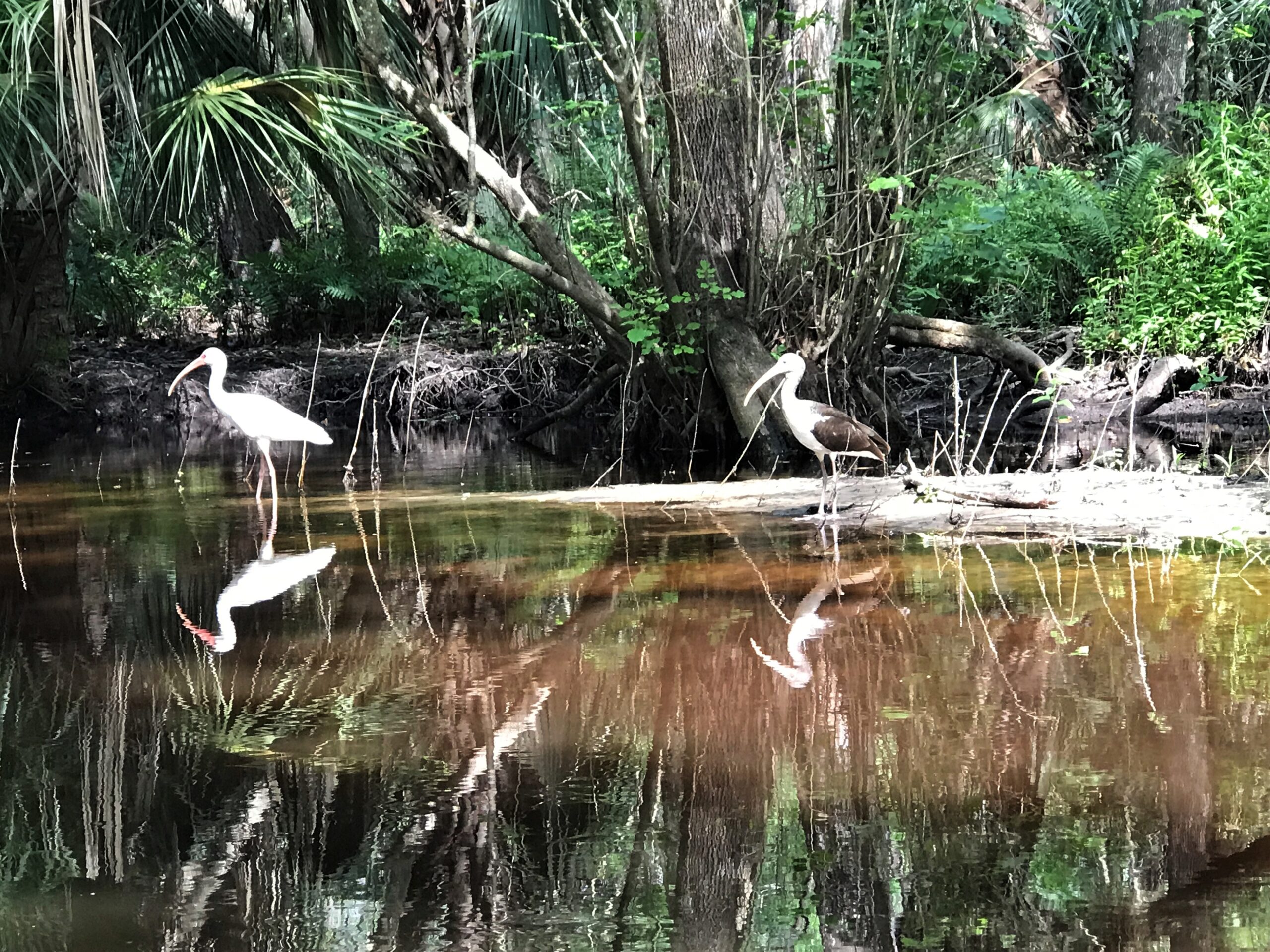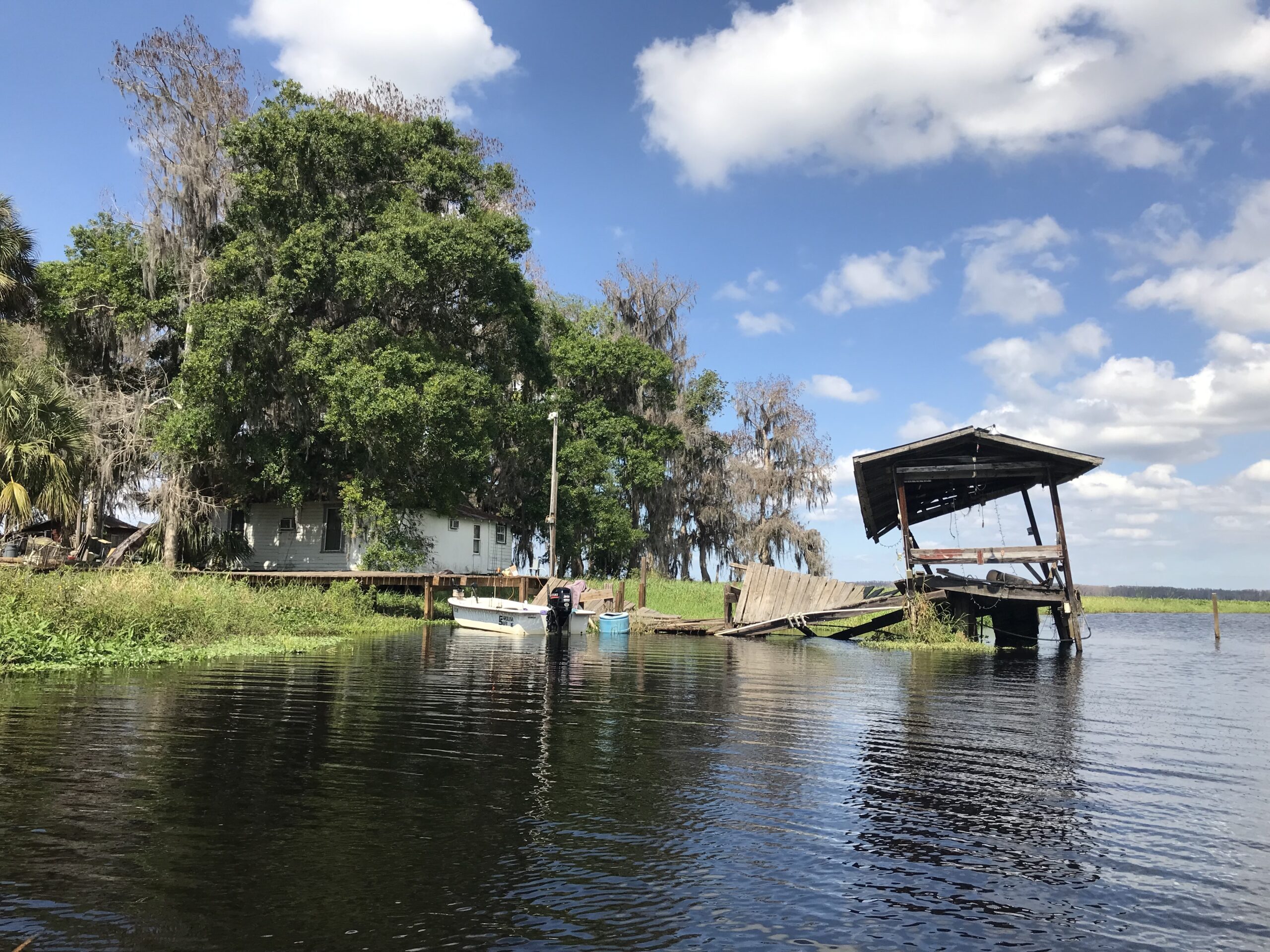Highlands Hammock State Park, Sebring, Florida
After Jesus was born in Bethlehem in Judea, during the time of King Herod, Magi from the east came to Jerusalem and asked, “Where is the one who has been born king of the Jews? We saw his star in the east and have come to worship him.” ~ Matthew 2:1-2 How many Magi (that’s Greek for ‘wise man’) were there? Did you know that scripture never gives us a number? One day, someone, somewhere just decided there were three, probably because three gifts are mentioned. There are actually several fallacies we all cling to in our Christmas traditions. Here’s another – the Bible never mentions Mary riding on a donkey to Bethlehem. And the wisemen didn’t visit at the stable. So just who are these guys and why did they come looking for the “King of the Jews” in the first place? They were most likely astronomers/astrologers. At that time, these men would’ve most likely been trained in things like interpreting the heavenly bodies, history, religion, and other educational studies. John MacArthur poses an interesting theory that the “star” they saw was actually God’s shekinah glory shining to get their attention and send them on their way. This shekinah glory is what led the Hebrews through the desert during their exodus from Egypt (Exodus 13:21), and it’s what the shepherds saw when the angels announced the birth of Christ (Luke 1:9). Also viewing God’s shekinah glory seems to be limited to those to whom He wants it revealed. I’ve not heard this before, but I like it, especially given the fact that when the Magi started asking around, no one else had any idea what they were talking about. The main point of this passage seems to be that Matthew wants us to know that God sent people from all walks of life to witness His Son’s birth. The birth of the King of Kings.

We’re going to jump from Christmas to East here. 😊
Today is Ash Wednesday – the beginning of Lent for Catholics and most Protestants. Lent comprises the forty days before Easter. Many people know it as the time when some can’t eat meat on Fridays. Or some know it as a time when people give up “something” for forty days. I uncovered two articles that speak to its sketchy origins. If you’re curious, check out one (or both) of the following articles:
https://www.christianitytoday.com/history/2008/august/beginning-of-lent.html?utm_medium=widgetsocial
For many, the culmination of Lent lies in the remembrance of what happened in Christ’s final days – Thursday through Saturday before His resurrection that we celebrate as Easter. Thursday – the significance of the Last Supper institution of Communion and His arrest, Friday when He was exposed to a mockery of a trial and then executed in the cruelest of ways; the cross, and Saturday the waiting period between His death and resurrection.
In our families, this time was taken seriously as we reminded ourselves what Jesus endured for our salvation.
On to our day . . . .
The scent of orange blossoms wafted in through the Jeep vents as we drove by huge orange groves on our way to kayak Arbuckle Creek. Some of the groves looked healthy and thriving, but others seemed like no one was taking care of them – dead trees and tall grass, etc.

We kayaked this creek in the past (which is much bigger than what we’d consider a creek) and loved it, and today proved to be just as wonderful.
There were plenty of things to see – all types of birds, turtles, surface-bug-eating fish (means they would flop around all the time, sometimes right beside us!), cows (yes, cows!) and of course, no paddle would be complete without sightings of Florida gators. But the weird thing today was that the gators didn’t want us to see them. Without exception, they dove into the water well before we got anywhere near them.







And there was also the ‘air show’ going on during most of our paddle. Kinda exciting, but they really messed with the quiet ambiance we should’ve had today.



An air force base is nearby and today, they were practicing flying four MC-22 Osprey. Of course, I didn’t know that! But Blaine knew they were Osprey. 😊 I grabbed the following from military.com:
Osprey is the primary assault support aircraft for the U.S. Marine Corps. It was fielded to replace the CH-46 Sea Knight helicopter and has been deployed to support troops in combat since 2007.
The Osprey is unique in that it uses two engines positioned on fixed wing tips housed in nacelles that rotate to allow the MV-22 to land and take off vertically, but achieve much faster flight than a helicopter by tilting the nacelles forward while in flight in a configuration similar to a fixed-wing aircraft.
With the speed and range of a turboprop, the maneuverability of a helicopter and the ability to carry 24 Marine combat troops twice as fast and five times farther than previous helicopters, the Osprey enhances Marine assault operations. The Osprey’s impact was felt immediately upon its arrival in Iraq. Commenting on its advanced expeditionary capabilities and staggering operational reach, a top Marine commander went as far as to say it turned his battle space “from the size of Texas into the size of Rhode Island.”
The MV-22 also provides transport for White House staff as part of the HMX-1 presidential squadron based in Quantico, Va.

Back to our day . . . .



and men were standing on it scouting for gators for the upcoming hunting season.

It was pretty breezy out there and we found ourselves being blown around if we didn’t paddle.

The current was fairly strong on the way up, so on the way back, we often took turns paddling. You know what that means, don’t you? We’re getting older. 😊



We’ve seen them before when we paddle, but never this large of a grouping!
Below you’ll find some information about them.
A very large “school” may contain as many as a dozen different species of whirligigs. They’ve been clocked at speeds up to 1 meter per second (that’s just over three feet for those of us not familiar with the metric system 😊). They have the ability to secrete a smelly substance that deters predators, and a shiny, black finish. Whirligig beetles’ eyes are split; half of each eye lies below the horizon and half rises above it, so they can view two worlds at once—pretty handy for a predator. When on the surface, they absorb air from the atmosphere, but they tuck an air bubble under their wings when they dive. They row with their flattened and fringed middle and hind pairs of legs, and they hold their front pair of legs forward, ready to grasp their prey. Impressive on the water’s surface, they are good swimmers underwater (they may dive when alarmed), and they migrate from pond to pond by flying.
For an insect-size animal, the top layer of water molecules has a tough film. Whirligigs and water striders skate on top of it; snails and leeches glide belly up on its under-surface. Other insects get stuck on it when they fly too close. For some below the surface, it can be a prison that they aren’t strong enough to break through. Whirligig beetles find their food stuck in that film. The last two segments of their antennae are used to detect the tiny waves made by insects struggling on the surface film, and they also scavenge on floating dead material. In A Guide to Common Freshwater Invertebrates of North America, Voshell surmises that “the waves that the adult whirligig beetles generate when swimming may function for the echolocation of food, like sonar used by ships at sea.” Wowsers!
Ms. Whirligig lays her eggs underwater, on plants. Like their parents, the immatures are “engulfer-predators. Climbers/swimmers, the larvae eat water mites, snails, worms, and other small aquatic insects (especially mosquitoes), and their brethren. They pick up dissolved oxygen from the water by means of external gills located on the sides of their abdomens. When the larvae are ready to pupate, they build a case of mud, sand, or leaf pieces on a damp shoreline. Dineutes adds to the degree of difficulty by doing this upside down, suspended over its building material from vegetation by its posterior hooks (think Houdini in a strait-jacket), stretching down to grab one mouthful at a time to construct a pupal case (NO, the BugLady is NOT making this up!).
Two other interesting whirligig-facts. Ann Haven Morgan reports in Field Book of Ponds and Streams that a researcher who fed freshly-killed larvae to captive adult Dineutes observed a piranha-like feeding frenzy. “As many as could would seize the insect, crowd around it, grasping it, whirling around it in wild curves and sometimes diving beneath the surface, but always holding on to their prey and tearing out mouthfuls of insect tissue.” The charming (second) fact that males can squeak isn’t quite enough to banish that mental picture. ~ University of Wisconsin/Milwaukee.
The author calls herself ‘The Bug Lady’ 😊. And that, my friends, is your entomology lesson for today!


The plan after our four-hour paddle, was to head home, change clothes and head into town for pizza. And that’s exactly what we did.


The pizza was worth the effort! Yum!
